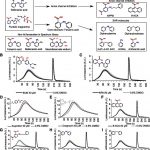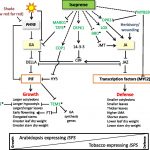Evolution of Frost Tolerance in the Pooideae
Frost is one of the most severe abiotic stresses a plant can experience, and exposure to frost is a limiting factor for many species in temperate and arctic regions. Only a few ancestrally tropical angiosperm lineages have managed to colonize temperate biomes. Although the grass subfamily Pooideae dominates temperate and arctic grass floras, the ancestors of this group were most likely adapted to tropical or subtropical climates. Cold acclimation, wherein plants increase their frost tolerance in response to gradually falling temperatures and shorter days in the autumn, had to have been a critical adaptation in the spread of Pooideae to temperate and arctic regions. Understanding  how complex traits such as cold acclimation evolved remains a major challenge in evolutionary biology. Schubert et al. (10.1104/pp.18.01448) report on their investigations concerning the evolution of cold acclimation in the Pooideae. The authors’ examination of differential gene expression after cold treatment in the transcriptomes of five phylogenetically diverse species revealed widespread species-specific responses of genes with conserved sequences. The evolution of both protein-coding and regulatory sequences as well as the origin of novel genes and functions contributing toward evolution of a cold response in Pooideae. These results suggest that selection pressure resulting from global cooling during the Cenozoic must have acted on already diverged lineages. Nevertheless, conservation of cold-induced gene expression of certain genes indicates that the Pooideae ancestor may have possessed some molecular machinery to mitigate cold stress. In toto, however, the data suggests a mostly independent evolution of cold acclimation responses in the Pooideae.
how complex traits such as cold acclimation evolved remains a major challenge in evolutionary biology. Schubert et al. (10.1104/pp.18.01448) report on their investigations concerning the evolution of cold acclimation in the Pooideae. The authors’ examination of differential gene expression after cold treatment in the transcriptomes of five phylogenetically diverse species revealed widespread species-specific responses of genes with conserved sequences. The evolution of both protein-coding and regulatory sequences as well as the origin of novel genes and functions contributing toward evolution of a cold response in Pooideae. These results suggest that selection pressure resulting from global cooling during the Cenozoic must have acted on already diverged lineages. Nevertheless, conservation of cold-induced gene expression of certain genes indicates that the Pooideae ancestor may have possessed some molecular machinery to mitigate cold stress. In toto, however, the data suggests a mostly independent evolution of cold acclimation responses in the Pooideae.



